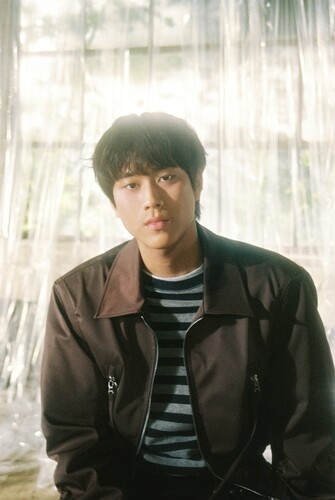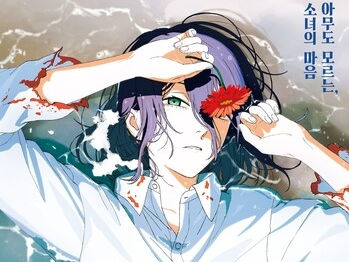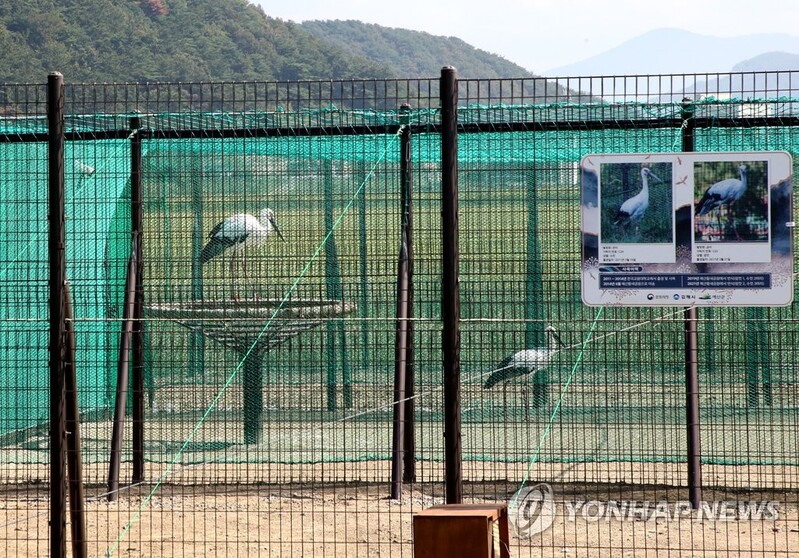 |
| ▲ This photo, provided by Kimhae City, shows a pair of male and female storks in the middle of the breeding site. (PHOTO NOT FOR SALE) (Yonhap) |
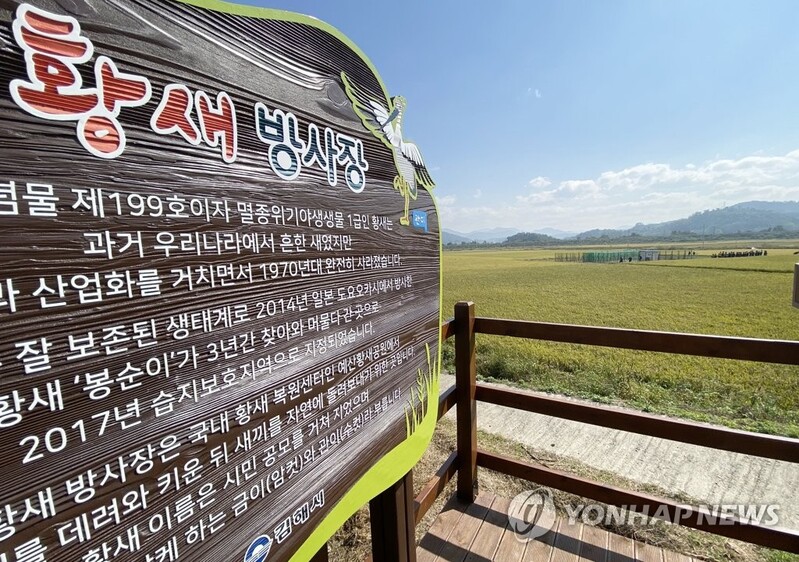 |
| ▲ This photo shows Kimhae Bongha Garden stork breeding site. (Yonhap) |
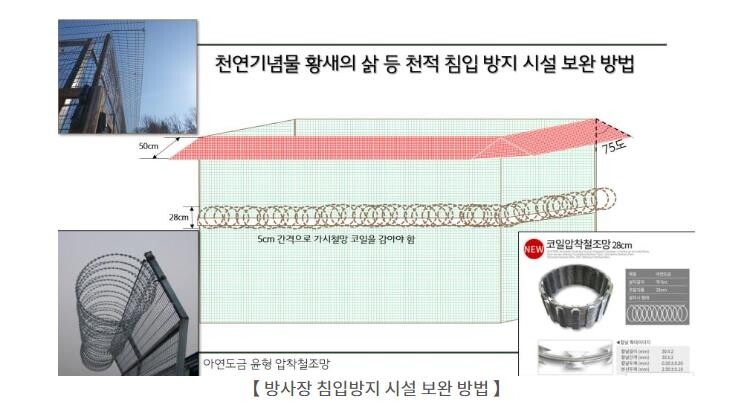 |
| ▲ This photo, provided by the Cultural Heritage Administration,shows supplementary facilities requested by the Cultural Heritage Administration to prevent natural enemies of stork breeding sites. (PHOTO NOT FOR SALE) (Yonhap) |
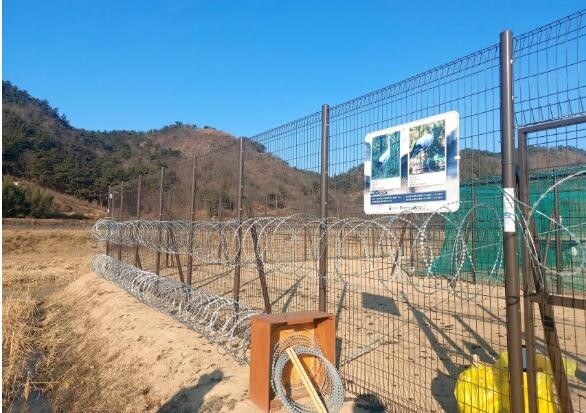 |
| ▲ This photo, provided by the Cultural Heritage Administration,shows blocking facilities such as a double fence at stork breeding site in Bongha Garden. (PHOTO NOT FOR SALE) (Yonhap) |
SEOUL, Jan. 8 (Yonhap) - Gimhae City, South Gyeongsang Province, is struggling to protect the natural monument stork from the spread of avian influenza.
Gimhae City has signed an agreement with the Cultural Heritage Administration on the protection of storks on September 30 last year, brought down a pair of male and female storks from Stork Park in Yesan-gun, South Chungcheong Province, and built a breeding site in Bongha Garden in Bonsan-ri, Jinyeong-eup. When the stork couple gives birth to their babies, they plan to breeding them to nature around this summer.
Currently, these two are good enough to eat 900g of loach a day.
However, since late autumn last year, AI, fatal to birds, has continued to occur in Gimhae. In the New Year, highly pathogenic AI occurred at a spawning farm in Hallim-myeon, close to Jinyeong-eup, where the stork breeding site is located.
In response, South Gyeongsang Province and Gimhae City killed about 200,000 poultry within 500 meters of the farm and surrounding areas.
Storks are also birds, so they can get AI. In 2016, two storks in Seoul Grand Park died of AI.
Gimhae City has begun blocking roads entering the stork breeding site from the end of October last year when AI first occurred, preventing outsiders and vehicles from entering. Lime was sprayed around the breeding site and disinfected at all times.
Gimhae City tests stork feces once a week for AI antigen tests.
To make matters worse, on December 20 last year, a pair of storks raised in Seosan Birdland, Seosan City, South Chungcheong Province, were bitten by a wildcat and died.
The Cultural Heritage Administration requested local governments of Gimhae City and Cheongju City to inspect and reinforce the defense facilities to prevent the same case from occurring again.
Coincidentally, wildcats also live in Bongha Garden, where Gimhae stork breeding site is located.
Accordingly, Gimhae City plans to install more natural enemy intrusion prevention facilities by adding barbed wire and transparent acrylic plates above the breeding site.
(This article is translated from Korean to English by Yunhee Cho.)
(END)
(C) Yonhap News Agency. All Rights Reserved














![[방송 소식] MBC 대학가요제 13년 만에 부활…26일 방송](https://korean-vibe.com/news/data/20251024/yna1065624915904676_716_thum.jpg)
![[신간] 레넌과 매카트니는 경쟁자였을까…'존 앤드 폴'](https://korean-vibe.com/news/data/20251024/yna1065624915904305_293.jpg)

